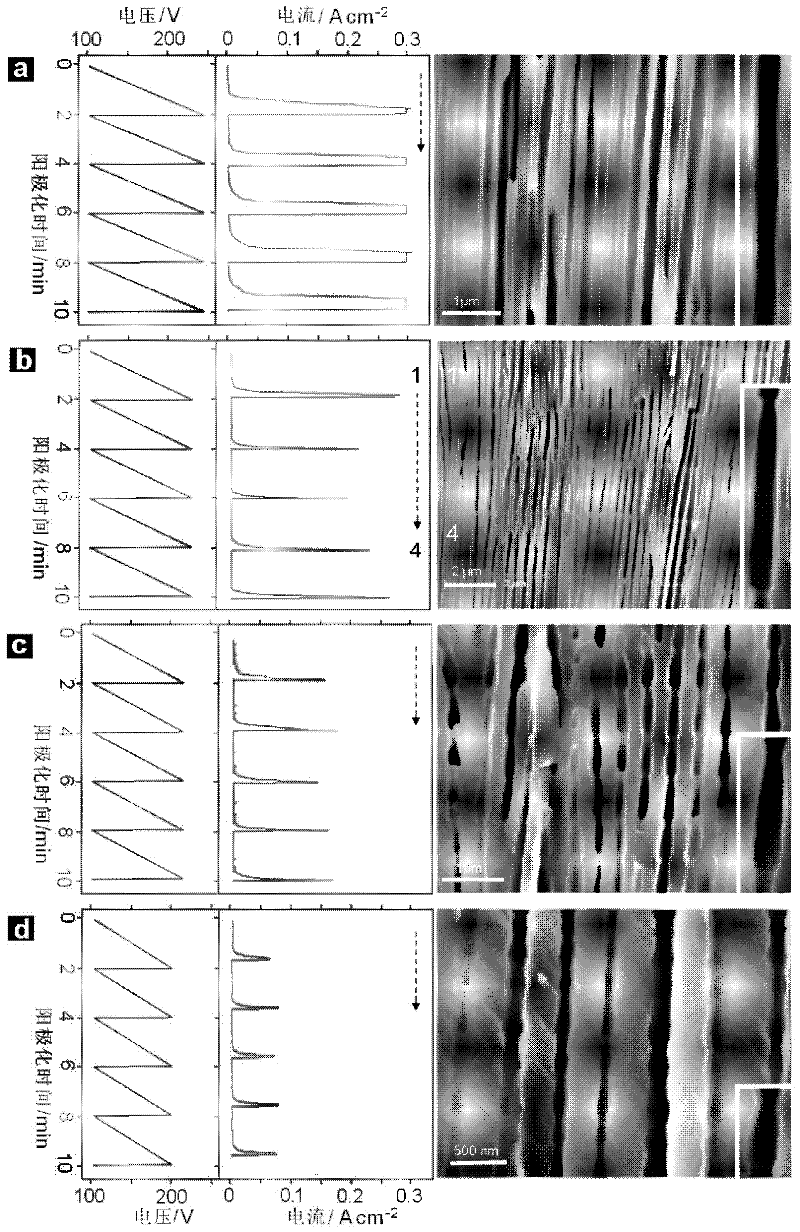Preparation of Nanoporous Materials
A technology of porous metals and oxides, applied in electroforming nanostructures, electrolytic coatings, electrode manufacturing, etc., can solve the problems of slow current recovery and inability to generate electricity
- Summary
- Abstract
- Description
- Claims
- Application Information
AI Technical Summary
Problems solved by technology
Method used
Image
Examples
example 1
[0113] Example 1 - Substrate preparation
[0114] High-purity (99.997%) aluminum foil from Alfa Aesar (USA) was used as substrate material. The aluminum foil was cleaned in acetone, and then electrochemically polished in a 1:4 mixture of perchloric acid and acetic acid by volume at 20 V for 2 minutes to obtain a mirror-finished surface. Two-step electrical polarization was performed using an electrochemical cell with a cooling stage at -1°C. The first step of anodizing is carried out in HA mode in 0.3M oxalic acid for 20 minutes, using a current density of J=0.15 A / cm 2. Afterwards, the formed porous oxide film was removed electrochemically by reacting in a mixture of 6% phosphoric acid and 1.8% chromic acid at 75°C for at least 6 hours, followed by cycling in 0.1M phosphoric acid, 0.3M oxalic acid, or 0.3M sulfuric acid. anodized. At the beginning of this step, the samples were anodized at a fixed potential for 5 min, using common MA conditions in each acid, to obtain ini...
PUM
| Property | Measurement | Unit |
|---|---|---|
| thickness | aaaaa | aaaaa |
Abstract
Description
Claims
Application Information
 Login to View More
Login to View More - R&D
- Intellectual Property
- Life Sciences
- Materials
- Tech Scout
- Unparalleled Data Quality
- Higher Quality Content
- 60% Fewer Hallucinations
Browse by: Latest US Patents, China's latest patents, Technical Efficacy Thesaurus, Application Domain, Technology Topic, Popular Technical Reports.
© 2025 PatSnap. All rights reserved.Legal|Privacy policy|Modern Slavery Act Transparency Statement|Sitemap|About US| Contact US: help@patsnap.com



